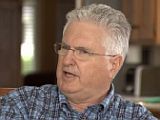FOUR COUNTER-INTUITIVE PRINCIPLES FOR GROWING A NETWORK THROUGH COLLABORATIVE LEADERSHIP: “It was exciting to hear about the work of the British Columbia Partnership for Water Sustainability and how their approach has exemplified network leadership as I have conceptualized it,” stated Dr. Jane Wei-Skillern, Haas School of Business, University of California Berkeley

“The network emerges around a common goal, rather than a particular program or organizational model. The community mobilizes the resources from throughout the network, and based on existing relationships in the community. The solution is emergent and comes from the community members themselves, rather than being pushed from the top down. And finally, once a network is up and running and proves itself to be effective, It becomes the primary vehicle for change, rather than the individual organizations themselves,” stated Dr. Jane Wei-Skillern.







